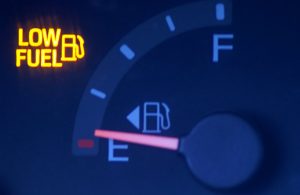Have you noticed that you’ve had to fill up at the pumps more often in the wintertime? Colder weather can often mean that your fuel economy will worsen. Why is that? Why wouldn’t your gas mileage be the same no matter what the temperature is? Keep reading to learn just that and how you can help your fuel economy.
You might also be interested in: Common myths about gas mileage
What causes your fuel economy to worsen in the cold? 
Whenever the temperature dips below 40 degrees Fahrenheit, the friction of the engine and transmission increase. This is a result of colder engine fluids. Your motor oil and other drive-line fluids get much colder, obviously, which alone can cause your gas mileage to dip. In the cold, your engine takes longer to reach its optimal, most efficient temperature. When your engine is cold, it will use more fuel. Additionally, the cold air itself can impact your fuel efficiency. Cold air is denser than warm air. This results in more aerodynamic drag on your vehicle, which subsequently causes more fuel to be used. You probably won’t ever notice this added drag, but when you see a few miles per gallon come off your fuel economy, you will take note.
You might also like: Helpful tips for winter driving
How can I improve my fuel economy in the winter?
You aren’t totally at the mercy of Mother Nature. There are simple tricks you can use to help your gas mileage, at least a little bit. You can keep your car parked inside overnight to allow your engine to stay a bit warmer. You should also avoid idling to let your engine warm up. This just wastes gas, and the quickest way to warm up your engine is by driving it.
Contact us to learn more about your gas mileage



